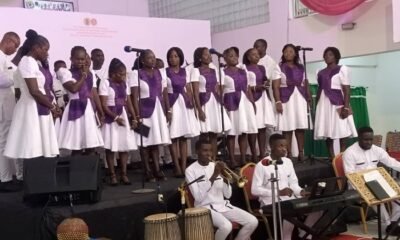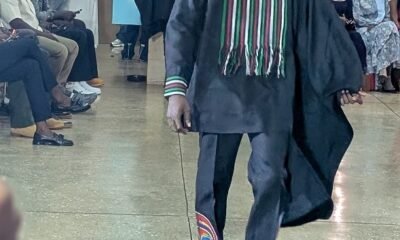News
Betrayed by their skin: The sad story of albinos in Ghana

In many Ghanaian communities, persons with albinism often face a multitude of challenges that originate from myths, discrimination, misconceptions, and societal prejudices.
In spite of many efforts and awareness to ensure that individuals with albinism are not discriminated against, albinos in many parts of the country are still confronted with many hurdles that hinder their social integration as well as their access to essential resources.
Albinism is a unique genetic condition characterised by a lack of melanin pigment in the skin, hair, and eyes, which subjects affected persons to heightened vulnerability due to their appearance. 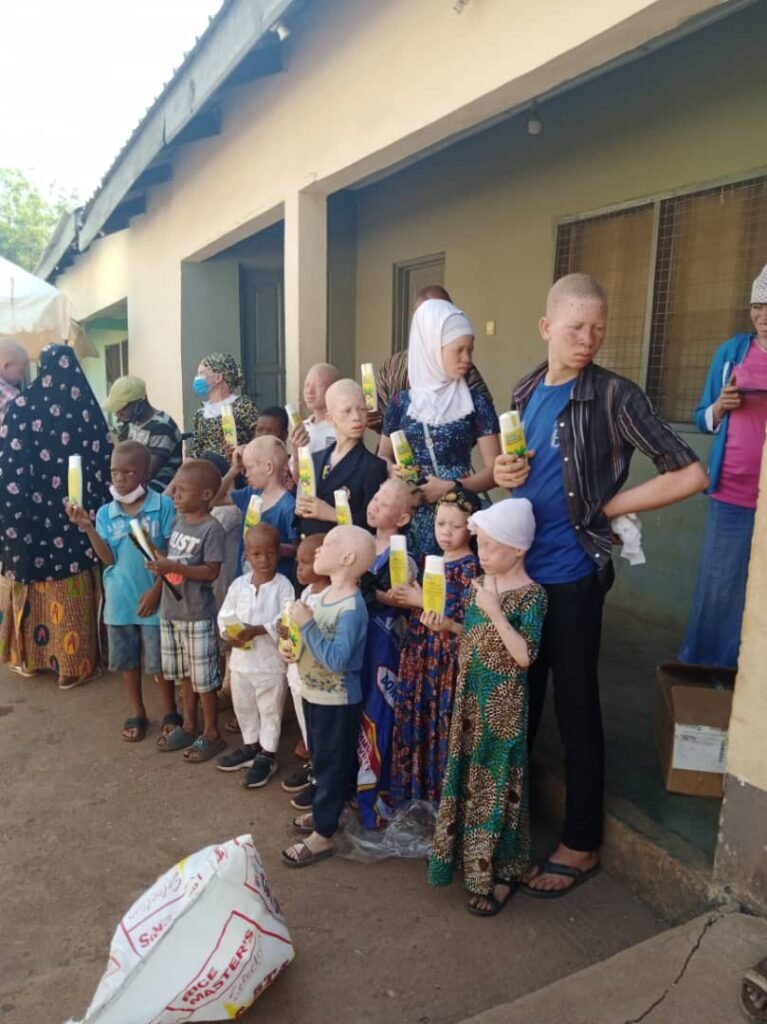
This condition often leads to stigmatisation and marginalisation within many communities, particularly in the rural areas.
Sadly, due to the heightened superstitious beliefs prevalent in many Ghanaian communities, many people tend to associate albinism with unfounded myths and misconceptions, including curses, hence further isolating these individuals.
One of the most pressing challenges faced by albinos in Ghana is their increased risk of getting skin cancer due to the absence of melanin, making sun protection a critical necessity.
However, access to protective measures such as sun creams and protective clothing remains limited, exacerbating their health risks.
Education also becomes a battleground for many persons with albinism in Ghana.
This is because prejudices and social biases often result in their exclusion from educational opportunities, denying them the chance to reach their full potential.
Similarly, bullying and ridicule in schools perpetuate feelings of isolation and low self-esteem among these individuals, impacting their academic progress and mental well-being.
Employment opportunities for Ghanaians with albinism are constrained by biases and misconceptions about their capabilities. This type of discrimination against albinos in workplaces impact their morale negatively, hence limiting their economic empowerment and social inclusion.
It must be mentioned that despite commendable strides made towards advocating for the rights and welfare of people with albinism in Ghana by the government and civil society organisations, including advocacy groups, many albinos in Ghana still live in fear in some communities.
Even though Article 17(2) of the 1992 Constitution states that “a person shall not be discriminated against on grounds of gender, race, colour, ethnic origin, religion, creed or economic status” some albinos have claimed that they had been prevented from either entering or living in some communities in Ghana.
Adam Abdul-Wahab, President of the Ghana Association of Persons with Albinism (GAPA), is one of the albinos who has confirmed this allegation.
GAPA is an advocacy group made up of persons living with albinism.
According to him, he had received complaints from many of his members from different parts of the country on the issue—being denied access to some communities.
He mentioned that some parts of the Brong Ahafo and Eastern Regions.
Additionally, he mentioned Akwamufie in the Eastern region as some of the areas albinos find unsafe to live.
For Abdul-Wahab, albinos are not permitted to live in these mentioned areas, citing an instance in which he, together with some members of their association, after receiving complaints from their members in Akwamufie on the same issue went to follow up on the incident but were also denied entry into the community.
According to him, children born albinos at Akwamufie are banished at birth from the community, explaining that such children are usually considered cursed to the community.
He said such myths and beliefs put the lives of persons with albinism in such communities at constant risk, leaving them in endless fear.
This, Abdul-Wahab said, was due to the lack of understanding as well as deeply rooted superstitions and cultural beliefs surrounding the condition.
Akwamufie incident
The Apenkwahene of the Akwamu Traditional Area in the Asougyaman District, Nana Ansah Brempong V in an interview, debunked the allegations that people with albinism are not permitted to live or enter the communities in the area.
He said the claims by the GAPA that albinos feel unsafe to enter or live in the Akwamufie area cannot be true as many albinos still live safely in the area.
He said Akwamufie is a culturally diverse area that does not discriminate against people based on their skin colour or race, including albinos.
Nana Ansah Brempong V has, therefore, challenged the GAPA to call out the chief who resisted them from entering the traditional area, adding that the Akwamus were loving and law abiding citizens of the country.
Buttressing his point that the Akwamufie is not a death zone for people with albinism, he said, “I had a school mate at Akwamuman Secondary School named Sogli who was an albino. No one discriminated against him.
He even had many school children always coming around him because he had a playful nature.”
Nana Ansah Brempong, however, pledged to investigate the matter, casting doubt over the authenticity of such claims in the Asuogyaman district of the Eastern Region.
The Regent of Ekumfi Bogyano in the Central region as well as the Ebusuapayin of Amoana family in the same community all said the area had no custom that bars people living with albinism to live in the community.
“We have many albinos living in many communities in Ekumfi. It is not their fault to be born albinos so why should we make life uncomfortable for them to live,” Opanyin Kobena Sam, a Unit Committee Member explained.
Cultural misconception
For the President of the Ghana Association of Persons with Albinism, some people still hold on to misconceptions that people with albinism possess some magical or supernatural powers, hence making them (albinos) a target for ritualists.
“In some cultures, people with albinism are believed to possess magical or supernatural powers, which can lead to harmful actions like kidnapping, mutilation, or even murder for the purpose of using their body parts in rituals,” he explained.
This brutal practice, known as “albino hunting,” Abdul-Wahab noted, is driven by a range of factors, including ignorance, myths, and deeply ingrained cultural beliefs.”
He said a study his outfit—GAPA, conducted on albino hunting in 2019 confirmed the incident, pointing out that the incidents normally occur in some communities in Eastern and Bono Regions.
“There are some studies conducted by the GAPA in 2019 which actually ascertained the fact that in some communities in the Eastern Region of Ghana and some communities in the Bono East Region, this practice is going on, where Persons with Albinism are banished from the community,” Abdul-Wahab stated.
Citing an incident, the GAPA President, said there was a time that one of their members was killed at Amanase-Boketey near Suhum in the Eastern Region allegedly for ritual purposes by a pastor, adding that the suspected killer was later arrested and prosecuted after constant perseverance.
He said the association had petitioned the Commission on Human Rights and Administrative Justice (CHRAJ) on this issue after their study confirmed the incident.
He, however, expressed the concern that CHRAJ had been slow on the case, calling them to conduct an independent investigation into the issue.
“It (the report) was submitted in 2019 up to now, 2023, we have not heard anything positive from CHRAJ and the only response they give us when we follow up is that they are working on it. I don’t know how long they will work on it but they admitted that whatever studies we did was true and will soon launch a report to that effect,” Abdul-Wahab bemoaned the delay.
Skin Cancer
He said the association continues to promote the rights of persons with albinism in Ghana by educating the public on the various misconceptions against albinos.
Similarly, he noted, GAPA had been creating awareness about the challenges faced by its members.
He noted that since the formation of the association in 2003, it has registered about 2,741 as members.
Abdul-Wahab, therefore, commended “Engage Now Africa”, an NGO for its continued support towards GAPA and its members.
He said Engage Now Africa supports GAPA members with sun creams to avoid developing black spots each time they get exposed to the sun and also with wide-brimmed hats.
He noted that treatment for skin cancer for people living with albinism was expensive, hence appealing to the government to make provision for sun creams and also add skin cancer treatment for albinos to the National Health Insurance scheme.
Abdul-Wahab similarly appealed to other NGOs and philanthropists to come to the aid of people living with albinism, particularly with sun creams and sun glasses.
Skin care/exclusion
Kwame Andrews Daklo, a social worker who focuses on albino advocacy with Engage Now Africa, expressed the opinion that people in Ghana with albinism have been largely isolated from other members of society, hence making it difficult for them to get access to resource to help them to cope with the sun.
According to him, many people, including the government did not see albinism as a disability, a situation he observed, had contributed to the worsening plights of albinos in the country.
He has, therefore, called on the government to include skin cancer treatment and sun creams to the NHIS package for persons living with albinism.
For her part, Dr Angela Ampofo, a dermatologist at Anton Memorial Hospital pointed out that access to skin products, sun creams and dermatologists remained a big challenge for many albinos in the country.
She said the sun increases the chances of albinos developing skin cancers, admonishing them not to walk under the sun without sun creams or protective clothing.
Way forward
The road to inclusivity and equal opportunities for people with albinism in Ghana remains a work in progress.
A concerted effort from the governmental and non-governmental bodies is therefore needed to break down these barriers as well as to eradicate stigma, and create a more inclusive society where individuals with albinism can thrive without prejudice or discrimination.
The reason is that their potential and contributions to Ghana’s rich societal fabric deserve recognition and support as the nation progresses towards true equality and inclusivity for all its citizens.
News
‘Stop shielding perpetratorsof Gender-Based Violence’By Spectator Reporter
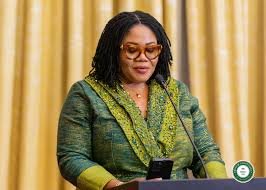
THE Minister of Gender, Children and Social Protection (MOGCSP), Dr Agnes Naa Momo Lartey, has called on traditional authorities, religious leaders and community influencers to stop shielding perpetrators of gender-based violence and allow the law to work.
She said too many cases were being buried at the community level, with abusers protected while victims were pressured into silence. This, she stressed, must end.
Dr Lartey made the call on Tuesday at the national launch of the 2025, 16 Days of Activism Against Gender-Based Violence campaign, held at the Kaneshie Main Station in Accra.
This year’s campaign, observed globally from November 25 to December 10, is on the theme: ‘Unite! End Digital Violence Against Women and Girls.’
It highlights rising incidents of cyberbullying, online stalking, image-based exploitation and other forms of technology-facilitated abuse that disproportionately affect women and girls.
The minister urged the media to use their platforms to condemn abuse and intensify education, noting that no person should “die in silence’’ in a society that values dignity, equality and the principles of Sustainable Development Goal 5.
She also encouraged women, girls, men and boys to report any form of abuse, assuring the public that support services were available to all, regardless of age or social status.
Dr Lartey described gender-based violence as one of the most pervasive human rights violations in Ghana. She referenced a 2016 Domestic Violence Survey showing that 27.7 per cent of Ghanaian women have experienced domestic violence, as well as a 2014 Demographic and Health Survey which revealed that 32 per cent of girls aged 15–24 believe wife beating was justified—an indication of harmful societal norms.
Calling the situation “unfortunate and sad,” she stressed that the nation must dismantle cultural beliefs that excuse or normalise violence.
Outlining government actions, Dr Lartey announced that Cabinet has approved the revised National Domestic Violence Policy, while the updated Domestic Abuse Bill and its Legislative Instrument were being finalised by the Attorney-General’s Department.
She also disclosed plans to operationalise a national shelter in Accra and begin constructing the 16 regional shelters promised to strengthen protection systems for survivors.
Additionally, the ministry has trained 200 market leaders as paralegals and 100 professionals, including psychologists, medical workers and legal experts, to support victims with referrals and counselling.
UNFPA Country Representative, Dr David Wilfred Ochan, reaffirmed the agency’s support for Ghana’s efforts. He unveiled a nationwide initiative titled “16 Stations, 16 Routes, 16 Destinations,” which will use the country’s public transport system to raise awareness on gender-based violence.
In partnership with the Ghana Private Road Transport Union (GPRTU), the initiative will promote stickers, public announcements, training and codes of conduct to ensure that transport stations become safe spaces where commuters, traders, porters and young people can access information and hotline services to report or prevent abuse.
Join our WhatsApp Channel now!
https://whatsapp.com/channel/0029VbBElzjInlqHhl1aTU27
News
Safeguard religious rights ofstudents – CRI urges studentsBy Spectator Reporter
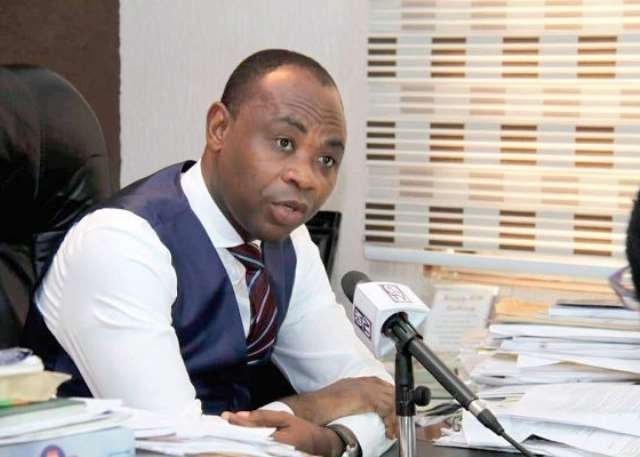
CHILD Rights International (CRI) is urging the government to adopt a firm and comprehensive national policy to safeguard the religious rights of students in secondary schools, insisting that no child should be denied education or the freedom to express their faith.
In a statement issued on Thursday in Accra, the organisation said the recent controversy involving Wesley Girls’ Senior High School highlights deep-seated gaps in how children’s rights were upheld within the country’s long-standing educational structures.
According to CRI, the incident underscores the need for Ghana to reassess the relationship between school traditions and the constitutional rights of students.
The group emphasised that the right to education and the right to religious expression were fundamental, and must be reflected consistently in rules and practices across all schools.
Additionally, CRI noted that many well-known mission institutions such as Holy Child School and St. Louis Senior High School operate on religious foundations that have shaped their administrative cultures for decades.
These differ significantly from state-established schools like Ghana Senior High School in Koforidua, Tamale Senior High School and Achimota Senior High School.
This contrast, CRI argued, raises an important national question and what policy framework has guided these mission schools since their incorporation into the public system?
Although the government has declared all such schools secular, they continue to function as government-assisted institutions, maintaining a hybrid structure that leaves them neither fully autonomous nor entirely under the Ghana Education Service (GES).
This unclear arrangement has led to inconsistent rules on discipline, conduct and religious expression from one school to another.
CRI warned that the absence of a unified and enforceable national policy leaves significant gaps in the protection of children’s rights.
While rights may be universal, the group emphasised that their protection depends on strong and clearly defined state regulations.
The organisation further stated that the State has yet to assume full regulatory authority over the schools it supports financially. As a result, key administrative and disciplinary decisions often remain at the discretion of individual school authorities, creating uneven standards nationwide.
For the rights of children, particularly their right to practise their religion to be fully realised, CRI believes the government must move toward full regulatory ownership of all schools it funds or classifies as public.
Without this, tensions between deeply rooted school traditions and constitutional freedoms are likely to persist.
The statement stressed that once a school admits a student, it takes responsibility not only for their academic development but also for respecting their identity, including their religious background. Therefore, no child, CRI insists, should be prevented from practicing their faith within the school environment.
Moreover, the organisation called for the establishment of clear national standards that guide schools on accommodating religious expression without compromising discipline or institutional order.
It also urged the government to strengthen safeguarding systems with firm oversight and routine monitoring to ensure that children’s rights are protected based on national law, not historical customs or administrative discretion.
CRI admonished the government to clarify the official status of government-assisted mission schools to ensure that the rights of all students are upheld consistently across the country.
By Spectator Reporter
Join our WhatsApp Channel now!
https://whatsapp.com/channel/0029VbBElzjInlqHhl1aTU27




